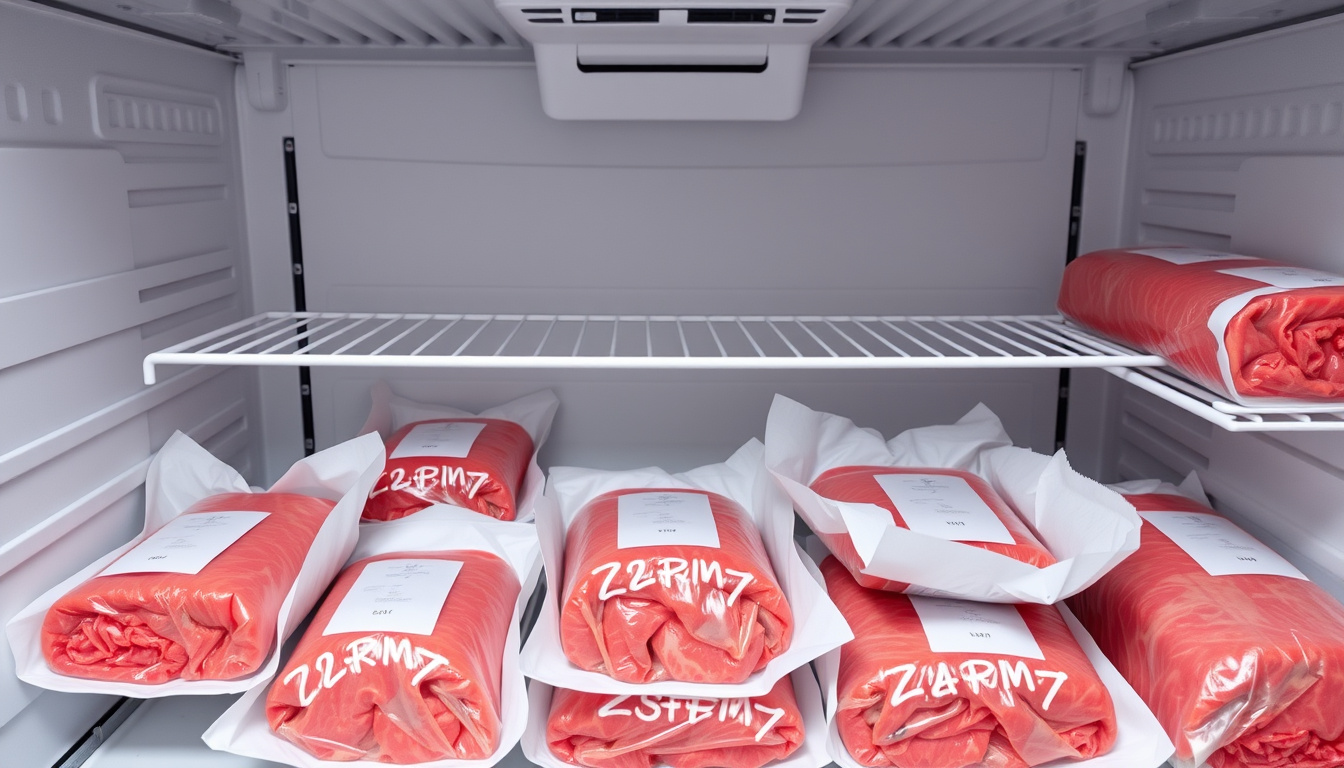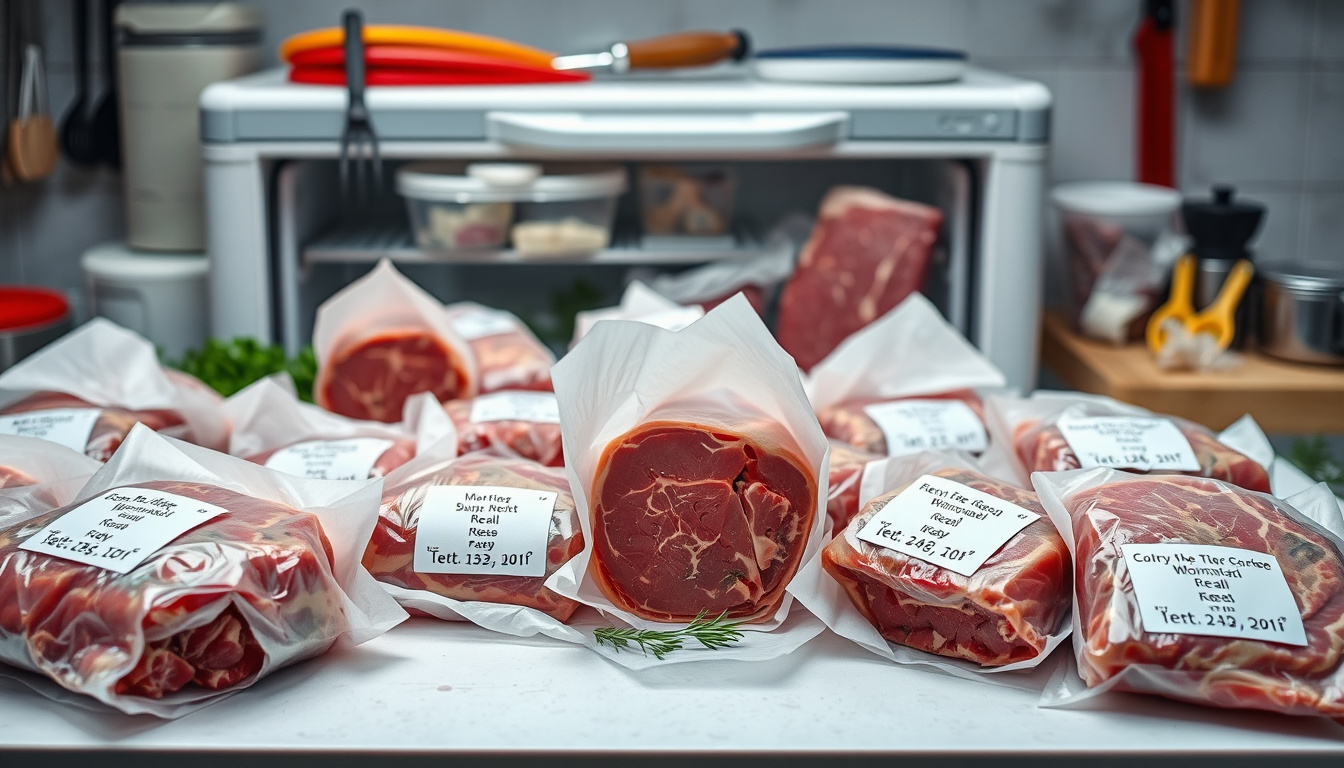When it comes to preserving meat, choosing the right packaging method is crucial for maintaining freshness and ensuring food safety. One of the best tools in the home cook’s arsenal is freezer paper. This specialized paper can help you effectively store meats while preventing freezer burn and extending shelf life. In this article, we’ll explore how to use freezer paper for meats, and why it’s a preferred storage solution.
What is Freezer Paper?
Freezer paper is a heavy-duty paper designed specifically for storing meat and other foods in the freezer. It comes with two distinct sides: one slick and coated, and the other plain. The slick side is designed to keep moisture in and protect against the elements within your freezer, making it an ideal choice for wrapping meat.
Why Use Freezer Paper?
-
Prevents Freezer Burn: One of the primary advantages of using freezer paper is that it helps minimize the risk of freezer burn. Freezer burn occurs when air comes into contact with the surface of the food, resulting in dry, discolored patches. By effectively sealing your meat with freezer paper, you can keep it fresh for longer.
-
Versatility: Freezer paper is suitable for a wide range of meats, including beef, pork, poultry, and fish. It can also be used to package large cuts of meat, such as roasts or whole poultry.
-
Environmental Consideration: Unlike plastic wraps and bags, freezer paper is often more eco-friendly. Many brands offer paper made from recycled materials, making it a sustainable choice for meat storage.
How to Use Freezer Paper for Storing Meat
Step-by-Step Instructions

-
Prepare Your Meat: Ensure that your meat is fresh and at a proper temperature before packaging. Ideally, meat should be around 32°F to 36°F. If you’ve just purchased meat or are working with home butchering, refrigerate it briefly before freezing.
-
Wrap the Meat: Start by wrapping the meat tightly in plastic wrap. This layer acts as an additional barrier to moisture and air. For larger cuts, such as roasts, ensure they are well-covered.
-
Wrap in Freezer Paper: Once wrapped in plastic, take a sheet of freezer paper and place the slick side against the meat. This slick surface should be in contact with the meat to maximize moisture retention.
-
Seal It Up: Fold the edges of the paper around the meat, similar to wrapping a present. Make sure to fold over the edges securely to prevent air from entering. You can use masking tape to hold the folds in place and ensure a tight seal.
-
Label: Clearly label each package with the content and date. This will help you keep track of what you have stored and when it was packaged.
-
Freeze Promptly: Place the meat immediately in the freezer to minimize bacterial growth and preserve its quality. Try to keep the packages in a single layer until they are fully frozen.
Storage Duration
The length of time meats can be stored varies. Ground meat is best consumed within 3 to 4 months, while whole cuts like steaks and roasts can last anywhere from 4 to 12 months. Poultry can remain frozen for up to one year if whole, or about 9 months if in pieces.
Common Mistakes to Avoid
-
Using Butcher Paper Instead: It’s important to distinguish between butcher paper and freezer paper. Butcher paper lacks the moisture barrier and is not suitable for long-term freezing.
-
Failing to Label: Forgetting to label your packages can lead to confusion and food waste. Always note the date and contents on each package.
-
Overpacking: Avoid stacking large quantities of meat on top of each other in the freezer, as this can lead to uneven freezing. Allow space between packages to ensure they freeze evenly and quickly.
Conclusion
Using freezer paper for meat storage is a simple and effective method to ensure the longevity and quality of your meat. By following the right techniques for wrapping and sealing, you can protect your meals from freezer burn and enjoy them well beyond their initial purchase. Implement these practices to master your meat storage and make the most out of your freezer space!
>> Chest Freezer Reviews <<
>> Upright Freezer Reviews <<

